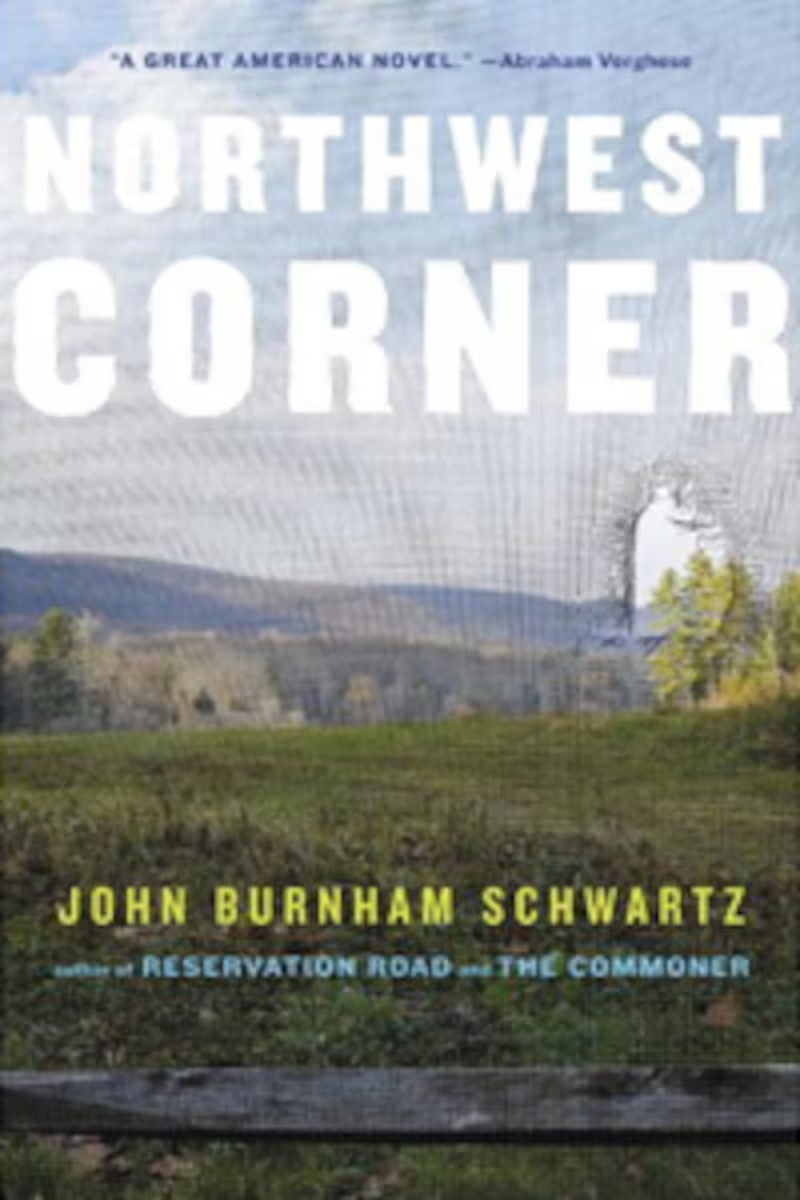The Woman Who Can Hear It All

Luke Williams’ debut novel, The Echo Chamber is a melodious masterpiece that revels in the joy of storytelling. His heroine is Evie Steppman, a woman whose extraordinary powers of hearing originated as far back as her time in the womb, the “echo chamber” from which she was able to hear “the wildest spectrum of sounds” from the “sunlight [that] rings in the ears as when one circles the top of a fine-wrought wine glass,” to “the tumescent heat of Nigeria, which sprawls and rumbles like a jet aeroplane.”
Born in Lagos in 1946, and now in her sixties hidden away in the dusty attic of her father’s family home in Gullane, East Scotland, Evie is a “repository of the dreamers of Empire.” Alone with the “mausoleum of sounds” that is her memory she must record her past “before it becomes tinnitus and is lost.” Williams weaves together a rich family history for his heroine—her father (a Polish Jew whose family fled their homeland to run a jam factory in Dundee) first met his future father-in-law (a madman with “more than one hundred names” and a passion for clockwork automata) on the 10 o’clock to London Kings Cross from Edinburgh Waverley on his way back to Balliol College, Oxford. Their stories intermingle with those of the other characters: Evie’s mother who sits patiently at home in Oxford waiting for her mad father while he “spent his days in second-class compartments” and “his nights in sleeper cars or station-side hotels”; her Nigerian nursemaid Taiwo; her childhood friend Ade who in later life writes to her with tales of slaughter and torture from his army days; the Nightsoil worker Nikolas she meets in the sewers of Lagos; and her lover Damaris whose diary records their life together in Edinburgh, London and on the road travelling around America—the only character through whose eyes we see the true extent of Evie’s eccentricity. From this multiplicity of voices Williams constructs a beautifully harmonious and satisfyingly substantial whole.
With more than a nod to his literary predecessors—from Scheherazade in the Arabian Nights, to Saleem with his “delicately gifted olfactory organ” in Rushdie’s Midnight’s Children—Williams takes his readers on a journey from the ruins of Imperial Europe, through Nigerian Independence from British rule in 1961 and acid-trips in San Francisco in the 1970s. Yet unlike so many other novels similarly ambitious in their scope, Williams observes and reports on events with a welcome degree of detachment. One of the few occasions where he proffers politically orientated comment is when he describes Evie’s father, a man who in his own mind “helped to build Lagos into a modern city”, bringing the “gift of city planning” to a “peasant population”, as actually having done “nothing more than project[ed] his own perverse fantasies on to Nigeria.”
Williams’ novel continually flirts with elements of magical realism, yet whether Evie is a woman with a “remarkable sense of hearing” or “just a freak with large ears” (“And those ears! A boat with its oars out” thinks Damaris when she first sets eyes on them) is ultimately left for the reader to decide. In the end its real magic lies in the lyricism of Williams’ prose: never has the accolade of a “new voice” been so apt.
—Lucy Scholes
The Fates At Play

Writing in The New York Times, Kit Reed had this to say about Reservation Road, John Burnham Schwartz’s 1998 novel about two Connecticut families torn apart by a hit-and-run accident: “Reflective, character driven as it is, Reservation Road reads like a thriller, swift and complete.” Schwartz revisits those families in Northwest Corner, his fifth novel, and once again lives up to Reed’s promise. Told through alternating voices in meticulously wrought, uncluttered prose, Schwartz has hammered out a riveting sequel, one that both moves and is moving.
Schwartz exposes enough over the course of Northwest Corner to orient readers who missed Reservation Road, but having a rough idea of what happened beforehand helps if you want to hit the ground running. Here’s the skinny—Dwight Arno, a divorced father, was driving his 10-year-old son Sam home from a ball game one night when he accidentally hit and killed 10-year-old Josh Learner, who wandered into the road while his family was stopped at a gas station so his sister could use the bathroom. The narrative focuses on Josh’s father, Ethan, who falls apart, and Dwight, who is crushed by guilt. Both families struggle to find a way to continue in a world where everything is obliterated by an act of random violence.
Northwest Corner picks up twelve years later, and the narrative shifts to Dwight and Sam. Former attorney Dwight, who turned himself in and served two-and-a-half years in prison for the hit-and-run, now lives in Southern California and works at SoCal Sports, a local sporting goods retailer. Sam, who remained in Connecticut with his mother, has blossomed into a strapping 22-year-old baseball star at UConn. Despite, or perhaps because of, the fact they’ve been estranged from one another since the moment Dwight turned himself in, both seem to be getting on well enough at the start.
But the fates are not yet finished with the Arno boys. Only this time it’s Sam who, inheriting the sins of his father, commits an act of violence that threatens to lay further waste to what’s left of these already shattered lives.
It all starts at a baseball game, the big game at the bottom of the ninth naturally, where Sam steps up to the plate with a chance to be the hero. He’s amped. “The strength fills him, blotting out the past; till it takes him too far, tips the meter into the red; and because it’s raw and threatening and not really there, this illusion of power, already leaving, leads him to his father. It makes him think of his father. At which moment, the first pitch on its way, he knows in his sinking heart how it’s all going to play out.” The bat never leaves Sam’s shoulder, and he’s called out on strikes. Later that night, self-medicating at O’Douls, a fellow student picks a fight with Sam, who came straight from the game. Sam is hit twice before finally taking that swing, driving his bat, “two-handed, with all the strength he’s ever wished for, into the guy’s stomach.” The kid is gravely injured. And Sam, pulling his own hit-and-run, hops a bus for California to find daddy.
Northwest Corner races for two reasons. First, Schwartz’s chapters are short, some feeling like vignettes at less than a full page, and each is told from a different character’s perspective. “Due to temperament and sensibility, I suppose, I don’t seem to be one of those maximalist, everything-and-the-kitchen-sink novelists,” he once said. Second, Schwartz uses suspense masterfully. At times, he ends a scene with a breathtaking cliffhanger before cutting abruptly to the next voice, delaying gratification for a spell. This might feel tiresome in the wrong hands, but Schwartz balances these against chapters that end satisfyingly.
But the novel’s pace belies its weight. Northwest Corner is a thoughtful and deeply rewarding story about family and redemption. When Dwight returns from work one night, he finds Ruth’s rental car in his driveway. Sam might be in there with her, which means the three of them could be together again for the first time in a dozen years. Dwight thinks, “It almost brings me to my knees in gratitude, here in the streets, this unexpected suggestion that my family was once more than just ruin.” Dwight’s accident tore the family apart. But Sam’s accident, and life’s fearful symmetry, just might be the thing that brings them back together.
—John Wilwol is a teacher and writer living in Washington. His work has also appeared at The Rumpus, The Millions, and The Washington Independent Review of Books.
Ghetto Noir

Last year, New York magazine published an article and a book about lampshades made from the skin of Jews at Buchenwald during the Holocaust. In his most recent novel, The Warsaw Anagrams, Richard Zimler takes on the story behind this disturbing, but seductive subject. The novel is already a bestseller in Britain and Portugal because the author of The Last Kabbalist of Lisbon sticks with what he knows: Jewish culture and the thriller. It is precisely this mix of genres that makes his new novel successful.
Upon opening The Warsaw Anagrams, I thought: why am I reading another Holocaust novel? It seems that most of what I’ve been reading and writing about recently revolved around the greatest tragedy of human history. The novel is set in 1940, Warsaw, where the Nazi’s are about to herd 400,000 Polish Jews into the largest ghetto in Europe. Nothing initially seemed to make Zimler’s book stand out, but quite soon the novel reveals itself to be following a classic Noir structure; a detective-style murder mystery, not only Holocaust literature—double sweet candy for fans of both genres.
The ghostly narrator, a once-famous sixty-seven year old physiatrist named Erik Cohen, begins the story by telling his listener about his grand-nephew, Adam. Erik voluntarily moves in with his niece in the ghetto, before the Nazis order all Jews into the “perimeter of brick and barbed wire,” as Eric says: “shutting us in as if someone had written us into a Kafka short story.” The Germans quickly hoard everything, leaving those in the walled island of the ghetto without coal and pepper; they’re cold and starving, wearing rags, and stinking. “The Germans dragged the Jews back to the Middle-Ages” is one of Zimler’s numerous crafty lines.
One day, Adam sneaks away for coal and does not return. Like many young boys, he had become a smuggler, living a double life, sneaking through the wall to the “Other Side” in order to secure decent food and scraps of money. His body is found, tangled in the barbed-wire on the border, which is not particularly surprising, but his leg is missing, sawed clean off at the knee, a bizarre detail. Soon after, the body of a teenage Jewish girl is also found on the barbed-wire, similarly mutilated.
After the murders, Erik sets about the city playing detective. It is assumed a Nazi guard is responsible, but the Jewish councilmen mysteriously want to keep the murders secret. In order to find out who killed his nephew and why they cut off his leg, Erik sets up interviews with one character after another; each advises he sees someone else; each answer leads to another question. Some supposed allies advise he use anagrams, as they do, to keep his identity a secret.
The plot becomes cluttered with secrets, clues, lies, conspiracy theories, and hints at supernatural possibilities. Instead of a sadistic Nazi, perhaps a Jewish fanatic is the murderer, using the body parts for some mystical ceremony? Or maybe it is a deranged doctor with a skin fetish? Or even a choir teacher with a pedophiliac bent? Cohen doesn’t know, but he’s set on finding out, acting more like a 1940s Hollywood private investigator.
Zimler’s novel tackles an eerie, incomprehensible idea, one that will remain perennially fascinating for its historic bizarreness: the skin of human beings was used to make lampshades. Where did these lampshades come from? That’s something to write a novel about.
—Randy Rosenthal
Alone in the Wilderness

Fleet of foot and sharp of shot, Diana, goddess of the hunt, watched after virgins. Margo Crane, the seventeen year-old heroine of Bonnie Jo Campbell’s Once Upon a River, can fell a buck, gut a catfish, and shoot the eye out of a muskrat, but virgin she is not. Wily Odysseus proves her closer counterpart in this odyssey on a fictional Michigan river after Margo’s life at home dissolves. In her search to find her mother, Margo encounters a series of men who aid and thwart her, but throughout, she exhibits an earthy sexuality, an intuitive sense of the river and the natural world around her, and an “unholy” way with a rifle.
Campbell, who’s written about the Michigan wilderness before, notably in American Salvage (a National Book Award Finalist), takes obvious pleasure in the landscape, and Margo exhibits it in a fierce way: “when Margo swam, she swallowed minnows alive.” She’s a bit of an outcast, can’t find her place at school, doesn’t say much (her silence is a weapon as much as the gun she carries with her), and is a disarming beauty. She’s mythic indeed, of another time. Mysterious, independent, and subject to the same sorts of confusion and loneliness any teenage girl is, even when she’s slicing open the throat of a deer with a dull blade.
The reader is immediately swept up in this strange girl’s story. In the opening chapters, we learn of the death of Margo’s well-loved grandfather and the disappearance of her mother (she leaves the river to “find herself,” sick of the mildew, sick of the damp). Margo’s uncle has sex with her gently in the shed (Margo doesn’t call it rape). A year later Margo enacts revenge, shoots him where it matters, and then when tragedy strikes her sad and sober dad, Margo takes to her boat.
The momentum is impossible to sustain, and the book begins to feel episodic and repetitive. Campbell is at her lyrical best describing the river’s fecundity, its animal stinks (“she smelled its musk and urine, she smelled blood and earth and moss and sweat”), the mushrooms, the ducks, and Margo’s prowess with the gun. Annie Oakley serves as Margo’s idol, but the frequent references to her reveal less each time. And though descriptions of Margo taking aim and shooting show reverence for the patience and precision of the hunt, lines like “She took aim at herself in the mirror with her own double-barreled gaze” feel unnecessary and heavy of hand.
She quests to find her mother, but there are bigger journeys at stake: “I’ve been trying to figure out how to live,” she says. Hard lessons are learned on this front through her dalliances with men. Gentle and rough, kind and not, the men, one after the next, provide her with shelter and something more: “She did not want to be in her own skin right now, and she did not want to be alone.” Being naked with someone offers that escape, and she takes full advantage.
By one of the final encounters with a man referred to as “the Indian,” the force of the book recedes. Mythical evolves to mystical, not for the better: “She had never made love with a man outdoors. The wind gave them something, as did the water flowing past, and every creature that crept or scurried on the ground, or flew in the air nearby or swam or splashed in the river passed some energy to them.” She’s described by others as feral, raised by wolves, a river nymph. “Why do guys always want to make a girl into something other than what she is,” she asks the Indian. He answers, “It makes a better story.” Campbell makes Margo many things. One longs for her to be human.
—Nina MacLaughlin







